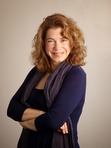Mary Sharratt's Blog, page 6
October 22, 2010
Writing Women Back into History
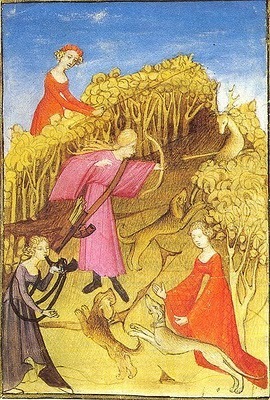
This illustration, from Wikipedia Media Commons, depicts medieval women hunting.
This article of mine was originally published in the May 2008 issue of Solander Magazine, published by the Historical Novel Society.
We have been lost to each other for so long. My name means nothing to you. My memory is dust.
This is not your fault or mine. The chain connecting mother to daughter was broken and the word passed into the keeping of men, who had no way of knowing. That is why I became a footnote, my story a brief detour between the well-known history of my father and the celebrated chronicle of my brother.
Anita Diamant, The Red Tent
To a large extent, women have been written out of history. Their lives and deeds have become lost to us. To uncover the buried histories of women, we historical novelists must act as detectives, studying the sparse clues that have been handed down to us. To create engaging and nuanced portraits of women in history, we must learn to read between the lines and fill in the blanks.
At its best, historical fiction can indeed play a crucial role in writing women back into history and challenging our misperceptions about women in the past. In her stunning novel The Red Tent, Anita Diamant turns our image of women in the Old Testament on its head by allowing the Biblical Dinah to tell her own story in her own voice. Donna Cross's novel Pope Joan explores the tantalizing possibility that a 9th century woman might have once sat on the papal throne. In The Thrall's Tale, Judith Lindbergh paints an unforgettable portrait of Thorbjorg, the 10th century Norse seidkona, or seeress, straight off the pages of the Saga of Erik the Red. Paul Anderson's 1376 page epic Hunger's Brides illuminates the life of Sor Juana Ines de la Cruz, a 17th century Mexican nun who became the greatest New World poet of her age. Sor Juana fans will also want to read Alicia Gaspar de Alba's novel Sor Juana's Second Dream.
While many authors have focused on documented historical figures, others have embraced the ellipses in history as an invitation to speculate on women's secret lives and untold stories. "Where history and biography are about the public world, fiction is about the private world," says Jude Morgan, author of Passion and Indiscretion. "And that [private world] was perforce the women's world, too: the private, often including the hidden and the unspoken. That's where historical fiction can be revealing." In her novels Tipping the Velvet, Affinity and Fingersmith, Sarah Waters imagines the smoldering passions that might have passed between women behind the façade of prim Victorian decorum. Jean Rhys, in her masterpiece Wide Sargasso Sea, resurrects the silenced Mrs. Rochester, the madwoman in the attic in Charlotte Bronte's Jane Eyre, and brings her to life as a tragically misunderstood Creole heiress. Louise Erdrich has written an entire body of work portraying the women (and men) of her mother's line, the Anishinaabe Nation.
Not surprisingly, many of these novels that capture the hidden truths of women's histories have been runaway bestsellers. Diamant's Red Tent, first published in 1997 with no advertising budget, became a word of mouth blockbuster and went on to sell to 25 foreign markets, while Cross's Pope Joan is now in its 18th printing and inspired a major motion picture starring German-born actress Franka Potente. Louise Erdrich's National Book Critics Circle Award-winning first novel Love Medicine has never been out of print.
At the end of the day, it's a question of knowing your market. Although it's hard to pin-point precise figures, the majority of buyers and readers of historical fiction appear to be women and they seem to crave books that present compelling portraits of strong female protagonists.
Most interesting is the possibility that historical fiction's rewriting of women's history has wider repercussions in the world of nonfiction.
"Historical fiction has a way of bringing figures neglected (or subordinated) by the history books back into the foreground," says Bethany Latham, Managing Editor of HNR. "Historical fiction can do this where history tomes fail because it is fiction –it's not bound strictly by documented fact. For instance, an historical fiction author can write an engrossing novel centering around a 'minor' female courtier, where a truly enlightening biography of the woman is problematic due to the dearth of historical information about her (think Philippa Gregory's Boleyn Inheritance versus Julia Fox's exceedingly speculative biography of Viscountess Rochford).
"Historical fiction treatments thrust historical female figures, whether they be aristocrats or serving maids, into the public eye," Latham continues. "Nonfiction authors cannot help but be influenced by the rampant popularity of a particular historical period or person promulgated by historical fiction and the screen adaptations the novels spawn; it causes them to look for their own 'angle' – for what hasn't been done, what's been overlooked – in order to focus their research on it. . . . Historical fiction can grab [women] by the farthingale and drag them into the limelight, leading to greater interest in them, more research into their lives, and subsequently a greater understanding of the part women have played in history."
jay Dixon, author of The Romance Fiction of Mills & Boon: 1909-1990s, speculates that historical novelists may have been pioneers in the women's history movement. "Ever since the publication of Sheila Rowbotham's Hidden from History in 1973, feminists have been trying to rescue women from their invisibility in male discourses of history," says Dixon. "But prior to that, women authors, in their historical novels, fore-fronted women – the wealthy, the poor, the powerful and the downtrodden – from all periods and all locales. Using imagination alongside research, they told the stories that could have happened, and maybe did. And in doing so not only gave voices to the voiceless, but also changed our perception of the past."
HNR Editor Sarah Johnson cites Anya Seton's classic novel The Winthrop Woman, first published in 1958, which tells the story of 17th century Elizabeth Winthrop, wife of Governor John Winthrop of the Massachusetts Bay Colony. The novel reveals how she defied her husband and community in order to befriend Anne Hutchinson, the famous heretic who later went on to found the colony of Rhode Island.
Exploding myths
Unfortunately writers can run into problems when they present a view of historical women that challenges our common misperceptions. On the one hand, readers and critics are justifiably skeptical about novelists who present plucky historical heroines with attitudes that feel too contemporary and thus anachronistic to their time and place. On the other hand, if you sit down and do the research, you will discover that every epoch had its radical voices, movers and shakers, extraordinary women who rocked the establishment. Think of Sappho, Hypatia, Hildegard of Bingen, Elizabeth I of England, Aphra Benn, Anne Bonny the Pirate Queen, Emma Goldman, and Rosa Parks, to name a few. Too often readers and, unfortunately some reviewers, appear to have a distorted and uninformed view of women in history and seem too quick to label any strong heroine anachronistic, even if the author has backed up the fiction with considerable research. Too often we base our picture of women in the past on the lazy assumption that all women throughout all of history were completely downtrodden and disempowered.
In preparation for the Rewriting Women's History panel at the 2007 HNS North American Conference in Albany, New York, I conducted an informal survey with members of the HNS email discussion list, asking what they thought were the most annoying historical clichés about women. Here are some of the responses:
Women's lives were completely limited to the domestic sphere.
Before Betty Friedan came along, all women were housewives and mothers and nothing else.
Women in the Victorian era led lives of leisure. (In fact, very few did.)
Women in the past did not enjoy sex.
Dr. Irene Burgess, Provost and Dean of Eureka College, Illinois, reminds us that what we know – or think we know – about women in history is mediated and changes over time. "Representing historical women in twenty-first century fiction can be difficult," Burgess points out, "because of the automatic lenses that a current audience places on the behavior of women from an older period. Because mores and language were so different, it's frequently difficult for current-day readers to believe that women of the past had autonomy, capability, and choice.
"A lower class woman of the 14th century in England," Burgess continues, "probably had greater degrees of freedom than an aristocratic woman of the 18th century in Italy. Although readers may perceive it as anachronistic to have a female weaver going to the tavern with some of her friends and telling her husband to take a hike if he protests, that probably did happen."
Dr. Samantha Riches, Director of Studies for History and Archaeology at Lancaster University, UK, agrees that the reality of medieval women's lives defy our popular conceptions. "The idea that women sat around creating tapestries and looking wistful is still quite widespread, largely due to Hollywood films perpetuating the same stereotyped ideas. Sources about women's personal experiences are few and far between, but we do have a few gems like the Paston letters (accessible via the Internet Medieval Sourcebook), which can give us a real insight into the lives of late medieval women. In 1448 Margaret Paston wrote to her husband John with a shopping list including almonds, sugar and crossbows: he was away in London and she was aware that she would need to organize defense of their property in East Anglia against a neighbor with whom they were involved in a dispute."
Although there are even fewer sources regarding the lives of common women, Riches believes that the visual evidence tends to indicate that women were employed in a wide range of occupations. Erika Uitz's scholarly study Women in the Medieval Town reveals that women worked as merchants, money-lenders, brewers, and even miners. One of the book's illustrations shows a detail of Hans Hesse's early 16th century "Miners' Altar" panel painting, which depicts a woman washing the heavy iron ore—a job that was even more backbreaking than mining.
The colorful lives of medieval women have inspired Paul Doherty's most recent mystery series, centered on 14th century physician Mathilde of Westminster, who is based on a historical figure. "We tend to think of women's rights developing over the centuries; this is simply not true," Doherty said when I interviewed him in the May 2006 Historical Novels Review. "I think it was Dorothy Mary Stenton, the famous Anglo-Saxon historian, who pointed out that women had more rights in 1100 then they did in 1800!"
Indeed, the 1800s would appear a big stumbling block in our perceptions of the past. "The early 19th century marked the nadir of European women's options and possibilities," Bonnie S. Anderson and Judith P. Zinsser write in A History of Their Own, Volume 2. "The creation of 'women's movements' in the 19th century was in part a response to this."
The Victorian era in particular has made a lasting imprint on the modern psyche. Suzanne Adair, author of Paper Woman and panelist at the Albany conference, notes that too often people look at women in the past through the lens of Victorian culture and base their view of women in completely disparate epochs on this stilted stereotype of the tightly corseted, sexually repressed Angel of the Home. "We like to think of ourselves as much more progressive than earlier generations," Irene Burgess adds, "but when it comes to issues such as sexuality and the body, we actually are more repressed – a product of our Victorian ancestry. One only has to think of the Wife of Bath or the poems of Sappho to realize that that is the case."
But even 19th century women's lives were more complex than many realize: the Industrial Revolution drove countless women and girls out of the kitchens and into factories and mills, inspiring the line in the popular early 19th century folksong, The Weaver and the Factory Maid:
Where are the girls? I will tell you plain:
The girls have gone to weave by steam,
And to find them you must rise at dawn,
And trudge to the mill in the early morn.
As astute historians will point out, women throughout history have always worked. One of the experiences that inspired my third novel, The Vanishing Point, set in Colonial America, was a visit to a tiny Philadelphia row house where two 18th century seamstresses once lived and plied their trade. I felt immediately drawn into their world. It was exciting for me to see the proof that even in this era, when nearly every factor of the dominant religion and economy herded women into marriage and domesticity, some women still succeeded in carving out independent, masterless lives, ruled by neither father nor husband.
In Good Wives: Image and Reality in the Lives of Women in Northern New England, 1650-1750, Laurel Thatcher Ulrich reveals that wives in Colonial America frequently acted as their spouse's business partners, running shops and farms in tandem with their men, and sometimes taking over the role of "deputy husband," which meant shouldering male duties, sometimes acting as surrogate if the husband were away. She cites one Edith Creford of Salem, Massachusetts, who acted as an attorney for her husband and signed a promissory note for £33, a considerable sum at that time. While researching my article Portals to Hidden Histories (Solander, November 2006), which showcased the living history sites at Historic St. Mary's City, Jamestown Settlement and Colonial Williamsburg, I learned of 18th century businesswomen and entrepreneurs, such as Jane Vobe, who ran the King's Arms Tavern in Williamsburg and Ann Wager, who founded the Bray School for African American children in 1760.
But the details of how women contributed to the economy tend to get buried under the perceived restrictions on these women's lives and their subordinate place in their culture. When examining the rules women are expected to follow, Irene Burgess reminds us that "that rules and injunctions are only put in place when people actually do the behavior that is being controlled. So, 'thou shalt not kill' wouldn't have been necessary if human beings weren't so fond of slaughter. Similarly, telling women they had to be 'chaste, silent, and obedient' meant that probably, for the most part, women were not any of those things."
Practical Writing Advice
So how can historical novelists create strong, authentic, and convincing female characters without resorting to either anachronism or lazy stereotypes?
Pick Your Heroine
Perhaps the most straightforward method is to choose an arresting historical figure, either famous or obscure, and delve deep into the research in order to bring her to life. Ask yourself what historical personae appeal to you and why.
"When I chose Juana la Loca as the subject for my second novel, I knew I'd set myself up for a challenge." says CW Gortner, whose novel The Last Queen is published by Ballantine. "I've been obsessed by her since my childhood in Spain and I found the lurid myth of her life hard to believe. History is rarely kind to women, particularly women in power, so I set out to discover if the story of the 'mad queen of Spain' was true. It took six years of delving, but slowly the web of misinformation and calumny began to unravel. For nearly five hundred years, Juana of Castile's story has been distorted because she posed a threat."
Internationally best-selling author Sandra Gulland followed up her wildly popular Josephine Bonaparte Trilogy with a new novel focused on a much more elusive character: Louise de la Vallière, the first mistress of the Sun King, Louis XIV. "She is described as timid, something of a wallflower," says Gulland of her heroine. "She was a daring horsewoman, a mistress to the Sun King, a Carmelite nun. The combination of these qualities intrigued me."
Michelle Moran, whose debut novel Nefertiti was a national bestseller, finds herself drawn to the stories of infamous women whose lives have previously only been narrated through the words of men. "I've never been able to believe that women throughout history fit neatly into the simple categories that ancient writers created for them: that of the loyal virgin or the scheming harlot," Moran states. "From Jezebel to Nefertiti, I find that rewriting women's history is not just a career, it's a calling."
Zoom in on a specific historical event
The Pendle Witch Trial of 1612 provided the foundation for my most recent novel, Daughters of the Witching Hill, published by Houghton Mifflin Harcourt. Seven women and two men were hanged as witches, based on the "evidence" given by a nine-year-old girl, who betrayed and condemned her own family. The most notorious of all the witches was the girl's grandmother, Elizabeth Southerns, aka Old Demdike, who died in Lancaster Gaol before she came to trial. Researching the trial, I was deeply drawn into this family tragedy, especially the tale of Southerns herself, a cunning woman and healer of long standing, whose "charms" were Catholic prayers and whose reputation was so fearsome that court clerk Thomas Potts wrote that "no man escaped her, or her Furies."
Katharine Weber's acclaimed novel Triangle centers on the Triangle shirtwaist factory fire of 1911. "It was striking to me how little the fire had been written about in books from then until the mid 1960s when a flourishing industry of books about the Triangle fire, most of them written for young girls, suddenly appeared, and have continued to appear every year. Why? It has to be the women's movement. This helped me focus on one of the crucial themes of my novel, the way we don't just tell our stories with agendas, we listen with agendas as well. . . . Triangle, like the fire itself, is a story about courageous women whose bravery was mostly obscured by the agendas of the moment."
Focus on a particular subculture
One way to come up with a unique angle on history is to select your favorite historical period and then delve into a corner of that society that fascinates you.
Susanne Dunlap's novels Emilie's Voice and Liszt's Kiss revolve around the world of music in 18th and 19th century Europe. Dunlap, who has a doctorate in music history from Yale, says that music was one way that talented women could distinguish themselves. "Women as performers were placed in the public eye and often then considered damaged goods – like prostitutes," says Dunlap. "But many were able to support themselves and lead fulfilling artistic lives as singers, pianists, actresses. They achieved independence, and that was considered dangerous by men. Women as true creative artists – composers, painters, authors – were even more dangerous. Those are the stories that intrigue me, and give me the opportunity to rewrite women's history."
Keep it real for the reader
Author Melinda Hammond (A Rational Romance), who also writes as Sarah Mallory, reminds us that it's essential to get the details right to keep your fiction convincing. "The trick is to create characters that are true to the period, yet have a resonance for a modern reader," says Hammond. "It is important that we make readers aware of the prevailing customs and culture of a particular period or they will not understand why our characters act in a particular way. It is up to the writer to 'set the stage,' capture the spirit of the period and create the right background for the characters."
Hammond believes that this is especially pertinent for romantic fiction. "In historical terms, romance is a relatively modern concept," she explains. "It's only in the last couple of centuries that people have come to expect to fall in love and marry."
The future of women's history
Samantha Riches believes that academic historians are moving away from the concept of "woman as other" to a more complex, multilayered view of the past. "For the last twenty to thirty years women's history has been 'recovered' by academic historians, led by feminist commentators, not to the fullest extent possible for sure, but nevertheless I would argue that women are now featuring strongly in many studies of the past," Riches states. "The extent to which this change has filtered through into popular perceptions is another matter, but I'd like to think that there is a gradual shift towards seeing the history of women as something that is integral to the study and understanding of the past, rather than as something separate and different."
Sandra Gulland describes history as a continually moving target. "Our story of the past, how we understand it, is constantly in flux. New discoveries, new perspectives: all these help us to revise – reVISION – the past, or rather: the story of our past."
Published on October 22, 2010 03:19
October 13, 2010
A Brief History of Enchantment: Witchy October Reads
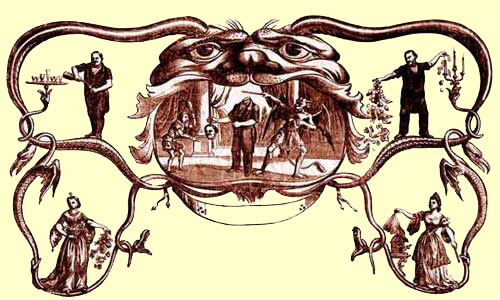
This article of mine was originally published in the February 2010 Issue of Historical Novels Review.
A Brief History of Enchantment: Magic Goes Mainstream
Paranormal fiction is hot. Think of the huge popularity of the Harry Potter and Twilight series; of adult fantasy/historical fiction crossovers such as Susanne Clarke's eccentric doorstopper, Jonathan Strange & Mr. Norrell; not to mention Seth Grahame-Smith's quirky genre-bender, Pride and Prejudice and Zombies.
"The publishing world has seen an explosion in fiction featuring a wide array of paranormal elements," says literary agent Wendy Sherman. "Vampires, zombies, werewolves, and witches. Readers seem to have an unquenchable thirst that publishers, television, and film makers have been quick to respond to. Supernatural themes may once, not that long ago, have been seen as a side line, but today's urban fantasy is a hugely popular genre all its own. When the rich detail of historical fiction is paired with fantastical elements we can reach an even broader audience of serious readers."
Barbara Peters, owner of the Poisoned Pen Bookstore, speculates that the paranormal is so popular because it "both taps into ancient tropes offered in folklore and is a way of escaping the terrifying and uncertain world we live in."
Witches, Wisefolk, and Kabbalists
Witches and wizards have long been a fixture in fantasy fiction. Until recently any adult fiction that embraced these themes was regarded as fantasy or horror by default. But a new wave of literary novels, revealing magic and witchcraft through the lens of well-researched history, is blurring the lines of genre and shedding fresh light on how our ancestors' belief in the otherworldly permeated every aspect of their lives. These novelists take their readers into that lost enchanted world.
Our forbears believed that magic was real. Dr. John Dee, conjurer to Elizabeth I, was a brilliant mathematician, cartographer, and also an alchemist and a necromancer. In Dee's England, more people relied on traditional cunning folk for healing than on physicians, who were so expensive that only the elite could afford them. Across world cultures, folk healers and other magical practitioners played a key role in their communities. Sometimes they were honored as wise folk, other times condemned as witches.
During the European witch persecutions from 1480 to 1700, an estimated 40,000 to 100,000 people were executed. These witch hunts were not a phenomenon of the Middle Ages, as popularly believed, but of the Renaissance and Reformation, stretching up to the dawn of the Age of Enlightenment. Some of those hanged or burned were actual cunning folk while others, likely the vast majority, were simply maligned victims of the witch-hunting frenzy. Recent titles illuminating the European witch hunts include Erika Mailman's The Witch's Trinity, set in 16th century Germany, and my own novel, Daughters of the Witching Hill, which tells the true story of cunning woman Elizabeth Southerns, aka Mother Demdike, and her family's struggle to survive the Pendle witch hunt of 1612.
By 1692, European witch mania had crossed the Atlantic and manifested itself in the infamous Salem Witch Trials which sentenced thirteen women and six men to death. The Salem tragedy provides the backdrop for two recent bestsellers. Kathleen Kent's critically acclaimed novel, The Heretic's Daughter, draws on the story of her ancestor, condemned witch Martha Carrier. Katherine Howe, the descendent of two accused witches, offers a more overtly supernatural slant in her novel, The Physick Book of Deliverance Dane, which explores the possibility that at least some of the Salem witches may have been cunning folk with real powers. Suzy Witten's small press debut, The Afflicted Girls, focuses not on the presumed witches but on their perceived victims and tries to solve the mystery underlying their hysteria.
"In writing The Heretic's Daughter," author Kathleen Kent states, "I worked to combine fact and fiction to illustrate the courage and fortitude of Martha Carrier, perhaps the only person who not only denied being a confederate of the Devil, but who very vocally confronted her judges, calling them to task for listening to a group of malicious, accusing girls."
Reader Anne Gilbert describes her fascination with The Heretic's Daughter. "Oddly, people of that time and place were both 'superstitious' in the modern sense, and, at the same time, and often in the same communities, there were others who were a bit more skeptical and 'dared' to disagree. As long as there wasn't a whole lot of tension in these communities, you could just shrug your shoulders at them. But if there were tensions for any reason, such 'skeptics' often came under suspicion. The Heretic's Daughter shows the process beautifully."
Accused witches were not the only ones to face persecution. Richard Zimler's stunning novel, The Last Kabbalist of Lisbon, set in 16th century Portugal, evokes the rich world of Jewish mysticism under fire in an age of inquisition and forced conversion.
Magic, Superstition, and Popular Culture
Beyond the witch trials, the very real belief in the supernatural shared by rich and poor, educated and illiterate in the Early Modern Period shaped a worldview vastly different from our own.
"Throughout the centuries, magic and the supernatural were considered by the majority of people to be the norm," says Kim Murphy, author of Whispers from the Grave. "In my upcoming, as of yet untitled timeslip, not only have I shown that Salem wasn't the only place on the North American continent that had witch trials, but that the 17th-century English were very similar to the Powhatan Indians in their supernatural beliefs. Today, these subjects are often regarded as New Age. In reality, they're very, very old. I interweave them in my work because it helps me explore what the traditional cultures have been trying to tell us all along."
Author Sandra Gulland, whose most recent novel, Mistress of the Sun, delves into the world of bone magic and horse whispering, agrees that it would be "historically inaccurate to write about the 17th century (or earlier, for that matter) and not include the mystical or paranormal — at the very least in the minds of your characters. Even the great mathematical genius Descartes believed that bad dreams were put into his head by demons." Gulland cites Hilary Mantel's Booker Prize-winning novel of Thomas Cromwell, Wolf Hall, as an excellent example of how subtly layered beliefs in the supernatural can be woven into a narrative that is not explicitly about magic or witchcraft.
"When writing about people from the past, magic, superstition and the supernatural are important elements that we cannot ignore," says C.W. Gortner, whose upcoming novel, The Confessions of Catherine de Medici, explores Catherine's relationship with the seer, Nostradamus. "Whether it is the occult menace implicit in Karen Maitland's superb medieval novels or the struggles of my own Catherine de Medici against the savage fanaticism of her age, belief in the supernatural enriches and informs our work, and the consciousness of the characters we inhabit. It is crucial to the very world we attempt to conjure to life for our reader."
Moving forward in time, some writers have used the occult as a vehicle for addressing the cynicism and horrors of the modern age. In Jake Arnott's novel, The Devil's Paintbrush, set in Paris at the dawning of the 20th century, the notorious Aleister Crowley takes the reader on a tour through a stygian underworld of black masses, hallucinogens, and apocalyptic visions. The devil's paintbrush of the title refers to the newly invented automatic machine gun, which heralds a violent and godless new epoch.
Priestesses and Seers
Some novels draw on a magical history inspired by the polytheistic religions that flourished before the Christian conversions. Judith Lindbergh's lyrical debut, The Thrall's Tale, takes us to Viking-age Greenland and presents an arresting portrait of the seidkona, or seeress, Thorbjorg from the Saga of Eirik the Red. Lindbergh says she never really perceived Thorbjorg's practice as "magic" anymore than she believes Thorbjorg herself did. "To my understanding, magic's derogatory connotations are mostly the persistent and powerful effects of Christianity's condemnation of the practices and practitioners of pre-Christian faiths," the author observes. "I decided to portray the seidkona Thorbjorg in my novel as a priestess deeply committed to her faith."
Similarly Kathleen Cunningham Guler's novel, A Land Beyond Ravens, explores the indigenous Celtic religion that still held strong in 5th century Britain when Christianity was struggling to gain a foothold. Guler says her book gives a sense of how spirituality may have been interpreted as magic. "Two of the characters have what I've named 'fire in the head,' which is a kind of catch-all term for anything from visions and prophecy to the muse a bard or poet draws on for inspiration. One of those characters is Myrddin, aka Merlin. Of course he's fictional, but it's my conjecture that his 'magic' was his intelligent use of the knowledge gained from 'fire in the head.'"
Beyond the shores of Europe, Louise Erdrich's novel, The Last Report on the Miracles at Little No Horse, shows how the trickster Nanapush "converts" missionary priest Damien Modeste, who is actually a woman in disguise, by introducing her to the Ojibwe spirit world.
Vampires and zombies
Other writers have taken a completely different route, wedding "straight" historical fiction to the fantastic and bizarre. In 1819 Lord Byron's physician, John Polidori published his story "The Vampyre," initiating the canon of English vampire fiction. The story was a hit, probably because the public assumed that the undead protagonist was modeled after bad boy Byron himself. Soon enough the vampire became a fixture in gothic literature. The late 20th century brought forth a literary vampire renaissance, beginning with Anne Rice's series of novels, The Vampire Chronicles, first published in the 1970s, which attained cult status. The trend continues. Elizabeth Kostova's 2005 novel, The Historian, reveals the 15th century prince Vlad Tepes, aka the Impaler of Wallachia, aka the Real Dracula.
Folktales of the zombie, a corpse reanimated by a powerful sorcerer, arise from the Vodou belief system of the West African diaspora. WB Seabrook's 1929 novel, The Magic Island, and Victor Halperin's 1932 film, White Zombie, starring Bela Lugosi, lifted the zombie from its original cultural context and made it a stock figure of the horror genre.
Vampires and zombies now rival each other for popularity in the current spate of Jane Austen-themed paranormals. Seth Grahame-Smith's Pride and Prejudice and Zombies weds the Regency classic with zombie mayhem and armies of ninja zombie-slayers, while the title of Amanda Grange's Mr. Darcy, Vampyre says it all.
Light years away from the Jane Austen industry, fantasy author Emma Bull has crafted the most unique of twists – a paranormal Western. Set in Tombstone, Arizona in 1881, Bull's novel, Territory, recasts the famous story of the shoot out at OK Corral as a supernatural battle ground: Wyatt Earp appears as a dark magician fighting over land rights in the mining boomtown.
Has genre-bending gone too far? Barbara Peters, no fan of the vampire-oeuvre, seems to think so. "I expect that like all hot genres it will play out and cycle down and something new will replace it."
HNR editor Bethany Latham offers a different viewpoint. "Historical fiction provides a way to escape from reality, first and foremost into the past, and what's more escapist than the supernatural, than fantasy? There will always be purists when it comes to any genre – those who don't wish to see adventure taint their literary novels or the paranormal intrude on a prescribed historical setting. But many readers are finding that seamlessly combining the two into a single, well-written novel can make for some fascinating, transportive reading. I'm a perfect example; I'm not a fan of 'fantasy' per se, and my first reaction if asked would be to say I don't read it. But then I'd remember how I greatly enjoyed both Kostova's The Historian and Clarke's Jonathan Strange and Mr Norrell, both of which fall into this category, and have to admit myself to be a liar. Works like this have encouraged me to broaden not only the horizons of what I put on my never-ending 'to read' list, but also what I consider to be good 'historical fiction.'"
How to Make it Work
As Latham points out, any author hoping to weave supernatural elements into their historical fiction must find a way to make it appear seamless. The magic must arise organically from the historical setting and worldview. It must feel authentic rather than forced or anachronistic. A solid background in research is essential. Familiarize yourself with the literature of your era, be it folk tales, ballads, written sermons, or skaldic poetry. If you write a paranormal send up on a classic novel, know the original text inside out. Paranormal mash-ups such as Seth Grahame-Smith's actually pay great homage to the integrity of Jane Austen's writing, allowing Elizabeth Bennett and Darcy's wit to shine through as they battle the zombie hordes.
"The best historical fiction," Kathleen Kent believes, "is anchored firmly in fact, and so I researched The Heretic's Daughter for several years, studying maps, court records and contemporary accounts, to give the story and the characters greater authenticity."
Primary sources such as witch trial transcripts are a great source for discovering stories and characters. My own inspiration to write a novel about Elizabeth Southerns was inspired by the following quote from Thomas Potts's A Wonderfull Discoverie of Witches in the Countie of Lancaster:
She was a very old woman, about the age of Foure-score yeares, and had
been a Witch for fiftie yeares. Shee dwelt in the Forrest of Pendle, a vast
place, fitte for her profession: What shee committed in her time, no man
knowes. . . . Shee was a generall agent for the Devill in all these partes: no
man escaped her, or her Furies.
Reading against the grain, I was amazed at how Mother Demdike's strength of character blazed forth in the document written to vilify her.
My research into the Pendle Witches also benefited from new scholarly research on historical cunning folk. Excellent secondary sources include Owen Davies's Popular Magic: Cunning-folk in English History and Emma Wilby's Cunning Folk and Familiar Spirits, both of which correct many misconceptions about historical magic practitioners. Keith Thomas's classic, Religion and the Decline of Magic, is perhaps the best introduction to superstition and popular belief in Early Modern Britain.
Don't chain yourself to your books and computer either. Being on location in places like Salem or the site of Greenland's Viking settlements or Lisbon's old Jewish quarter can add a whole other level of depth and authenticity to your writing.
Let the magic begin.
Published on October 13, 2010 02:17
October 8, 2010
The Birth Machine by Elizabeth Baines
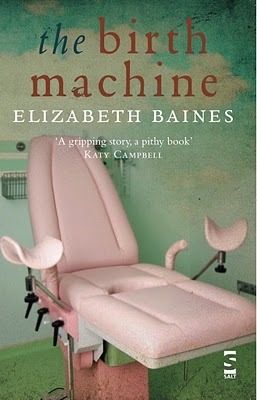
Elizabeth Baines's controversial book, THE BIRTH MACHINE, has just been re-issued. Be sure to check out this title, as well as Elizabeth's fabulous short fiction in the anthology, BITCH LIT, published by Crocus Books and co-edited by Maya Chowdhry and yours truly!
REBIRTH: LONG-AWAITED REISSUE OF ACCLAIMED NOVEL EXPOSING HI-TECH CHILDBIRTH
In ELIZABETH BAINES'S acclaimed novel, THE BIRTH MACHINE, Zelda lies on a hospital bed about to undergo hi-tech childbirth. But things don't go to plan, and as her labour goes wrong and the drugs take over, the past blends with the present and fairytale and myth, and long-buried secrets and present-day betrayals are exposed…
On its first publication The Birth Machine was seized on by readers as giving voice to a female experience absent from fiction until then. It was acclaimed as a significant event in women's publishing, also receiving critical praise, and quickly became a classic text. It was dramatized by Elizabeth and broadcast as an acclaimed play for Radio 4. In spite of this, and in part due to the fact that the author was at the centre of a women's movement controversy, The Birth Machine fell out of print. It is now reissued with the author's original structure (changed by the Women's Press for political feminist reasons) reinstated and including an Author's Note discussing the implications of the changes.
Still very relevant today to modern Obstetrics and Medicine, The Birth Machine is however more than that: it is also a gripping story involving a long-ago murder. Above all, it is a powerful novel about the ways we can wield power through logic and language, and about the battle over who owns the right to knowledge and the power to tell the stories of who we are.
'A gripping story, a pithy book' - Katy Campbell.
'An increasingly powerful narrative' - Time Literary Supplement.
The history of the publication of The Birth Machine can be read here.
The Author's Note can be read on Salt's website
here.
The book can be purchased from Amazon here.
ELIZABETH BAINES is also the author of the novel Too Many Magpies and a collection of stories Balancing on the Edge of the World, both published by Salt.
Published on October 08, 2010 02:27
September 19, 2010
Christopher Marlowe's Doctor Faustus
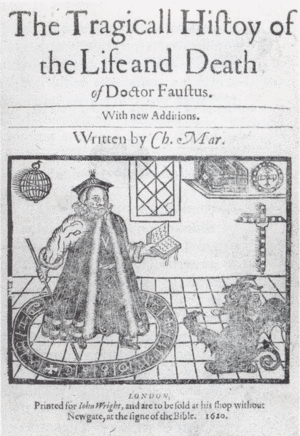
In the witch trials that raged across Europe in the 16th and 17th centuries, legal authorities strove to uncover evidence of a pact between the accused witch and the devil. But did this alleged pact ever exist except in the imaginations of the witchfinders?
The legend of Doctor Faustus captivated the public because it purported to reveal the story of real-life German magician, alchemist, and astronomer, Johann Georg Faust, who died in 1540. Rumour had it that his powers were given to him by th...
Published on September 19, 2010 03:10
August 1, 2010
Lammas-tide and Harvest Home

August 1 marks the beginning of the grain harvest in Britain, a period of intense labour and also celebration. In our age of convenience foods perhaps it's hard to imagine how important the harvest was in centuries past. The harvest could be poor, or fail entirely. If a community suffered two bad harvests in a row, entire families would starve.
The word "Lammas" derives from the Anglo-Saxon "hlaef-mass" or loaf mass. The first grain of the year would be reaped and then baked into a bread, whic...
Published on August 01, 2010 06:18
June 13, 2010
Guest Post: History's Black Widow
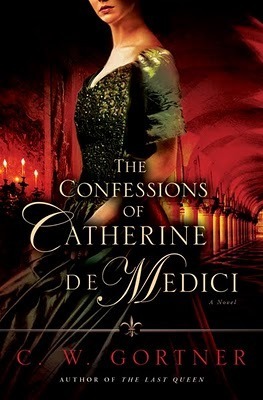
This week I'd like to present a guest post by C W Gortner, author of The Confessions of Catherine de Medici. Many of you already know Gortner from his previous novel, The Last Queen , which presents a sensitive portrait of the tragically misunderstood Juana "La Loca" of Castile. Gortner has passionately rewritten the histories of these maligned women, giving them voice and allowing them to tell their stories and set the record straight. And you never know . . . he might eventually write about ...
Published on June 13, 2010 07:33
June 3, 2010
Corpus Christi Carol
This haunting medieval carol seemed appropriate for today. There is definitely a mystery hidden in this song.
Corpus Christi Carol
Lulley, lully, lulley, lully,
The faucon hath born my mak away.
He bare hym up, he bare hym down,
He bare hym into an orchard brown.
In that orchard ther was an hall,
That was hanged with purpill and pall.
And in that hall ther was a bede,
Hit was hangid with gold so rede.
And yn that bede ther lythe a knyght,
His wowndes bledyng day and nyght.
By that bedes side ther knelet...
Corpus Christi Carol
Lulley, lully, lulley, lully,
The faucon hath born my mak away.
He bare hym up, he bare hym down,
He bare hym into an orchard brown.
In that orchard ther was an hall,
That was hanged with purpill and pall.
And in that hall ther was a bede,
Hit was hangid with gold so rede.
And yn that bede ther lythe a knyght,
His wowndes bledyng day and nyght.
By that bedes side ther knelet...
Published on June 03, 2010 04:02
June 2, 2010
Interview with Katherine Howe!
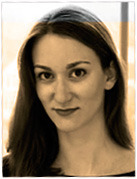
This interview is published on Amazon.com.
Katherine Howe is the bestselling author of The Physick Book of Deliverance Dane and a descendant of both Elizabeth Proctor, who survived the Salem witch trials, and Elizabeth Howe, who did not. Read her interview with Mary Sharratt, author of Daughters of the Witching Hill:
Katherine Howe: I am so looking forward to learning more about Daughters of the Witching Hill. As I started the book, I was curious about something. The Physick Book of Deliveranc...
Published on June 02, 2010 06:22
May 10, 2010
The English woodland in May
This weekend, I went walking in Marles Wood near Ribchester to see the bluebells.

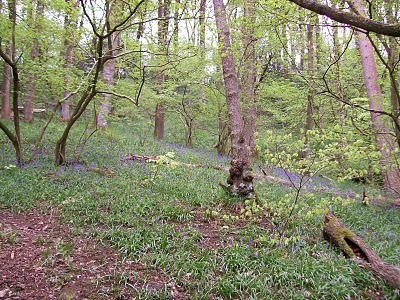
We also saw some very interactive cows.
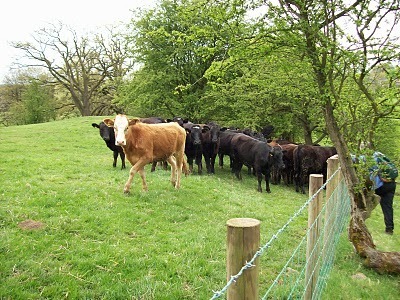
And here is the view of Pendle Hill.
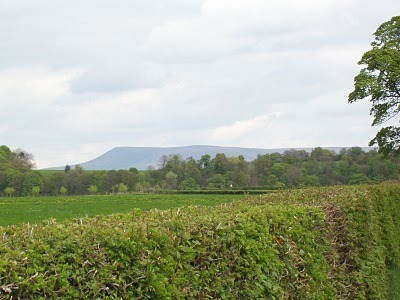



We also saw some very interactive cows.

And here is the view of Pendle Hill.

Published on May 10, 2010 02:21
May 9, 2010
Happy Mother's Day
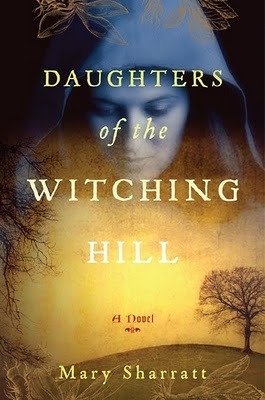
DAUGHTERS OF THE WITCHING HILL is a novel that celebrates strong mothers and daughters.
Mother Demdike, the most notorious of the Pendle Witches of 1612, had the most infamous reputation. Before her arrest on witchcraft charges at the age of eighty, she had worked as a cunning woman and healer for decades, training both her daughter, Elizabeth Device, and her granddaughter, Alizon Device, in her craft.
This is what court clerk Thomas Potts had to say about Mother Demdike in The Wonderfull...
Published on May 09, 2010 04:11

